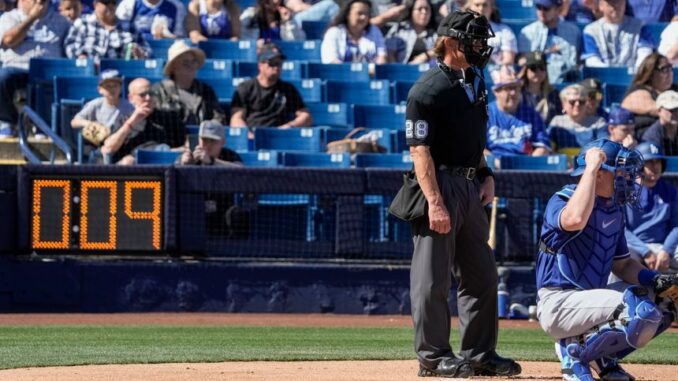
For those who partook in baseball opening week, the experience must have been exhilarating. The new pitch clock cast a glow over the games, but not in an intrusive way. In fact, there were very few violations of the pitch clock during the first week. On opening day, only Marcus Stroman of the Chicago Cubs had a ball added to the hitter’s count as a penalty for going over the fifteen-second time limit. All thirty teams played on opening day, and the average time for the fifteen games was two hours and forty-five minutes. Two Hours Forty-Five Minutes! Let that sink in.
As with all averages, some games were shorter, some games were longer. On his podcast, PTI co-host Tony Kornheiser lamented that his Washington Nationals played in one of the few games to go north of three hours. That game against the Atlanta Braves saw nine runs, twenty hits, five errors, and ELEVEN pitchers and still just clocked in at three hours and seven minutes. That’s a three-and-a-half-hour game minimum just a season ago.
On the speedier end of the spectrum, In a 2-0 loss Saturday, the Seattle Mariners and Cleveland Guardians game took just two hours and four minutes. That’s not a typo. Not forty minutes. Four minutes. Hell, the 6-5 loss in extra innings on Sunday, which had eighteen hits, two errors, and thirteen pitchers, concluded in under three hours, albeit 2:57. (Addressing the Mariners’ early struggles is fodder for another column). Indeed, it is possible that at some point this season, a game will be played in under two hours, harkening back to the routine game time in the 1950s.
MLB is quick to point out that the intention of the pitch clock wasn’t to shorten games but to increase the pace of play. It has done both, even if the latter pretty much guarantees the former. Nothing is lost with the quicker pace unless you’re a big fan of watching hitters adjust their batting gloves endlessly or watching pitchers kicking dirt on the mound while rubbing up the baseball. These are not your routine New York Yankees vs. the Boston Red Sox games of the early 2000s and thank god.
Think about what quicker games will mean in the Fall and the post-season. Families can actually take their kids to a game and reasonably assume they can go, enjoy the game, and get home to get them to bed in time to not be zombies at school the next day. In a sport that is becoming increasingly regional and needs an infusion of younger fans, baseball has taken one tremendous step with implementing the pitch clock. And it’s pretty great for old guys and gals who would watch anyway but can now get excited about the reexperience of enjoying a baseball game all over again.

